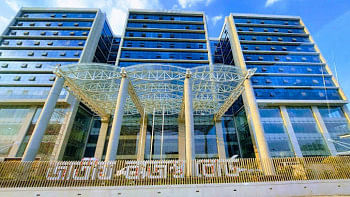Banks need a central database of collateral
The banking sector needs a central database of collateral as there is a tendency among borrowers to take multiple loans against a single asset, in a violation of rules.
A collateral profile of clients is not maintained, which leads to higher default loans, speakers said at a discussion styled 'Credit Operations of Banks' yesterday at the Bangladesh Institute of Bank Management in Dhaka.
A Management Information System (MIS) for collateral profiles is being maintained by only 40 percent of state owned commercial banks and 59 percent private commercial banks, according to a paper presented at the workshop.
Only the foreign commercial banks fully maintain a collateral profile, according to the paper -- Credit Operations of Banks 2016 -- presented by Prashanta Kumar Banerjee, professor and director of BIBM.
A unified collateral database will easily show the mortgaged assets before giving loans, said Helal Ahmed Chowdhury, a veteran banker and supernumerary professor of BIBM.
The government can develop the database through the land registry office as all the registry offices have been digitized, said Chowdhury, also an independent director of Islami Bank.
Banks take a non-encumbrance certificate from the government before taking land mortgage as collateral, he added.
If a data bank of all the lands in the country is maintained, similar to Credit Information Bureau database of the central bank, then it will remove the tendency of taking loans against the same assets, he said.
Banks do not properly maintain a collateral profile, said Mohammed Nurul Amin, managing director of Meghna Bank. Doing so will reduce the default risk, he added.
The highest percentage of loans in the banking sector is secured by real estate, which leaves these loans partly unsecured due to price volatility of such assets, according to the report.
The survey found that 59.27 percent of advances of all banks were secured by real estate in 2016, which was 58.30 percent in 2015.
The use of real estate as collateral was always popular as the value of this asset is high, the report stated.
The proportion of unsecured advances of all banks in 2016 was 1.01 percent, which was 0.92 percent in 2015.
In 2016, private commercial banks gave the highest segment of loans against real estate at 63.66 percent; foreign banks gave the most loans against machinery and fixed assets at 25.28 percent.
The choice of security is also important for banks to mitigate the risks associated with loans, the report said.
The report stated that real estate is considered as the sensitive security that may suffer from price volatility, leaving loans partly unsecured and may lead to strategic default.
According to the review report, banks mostly preferred rescheduling, restructuring and negotiation to recover loans instead of going to the court due to dalliance.
The most applied measure for recovery, except for going to the court, was loan rescheduling and restructuring by 96.67 percent banks in 2016.
Chowdhury suggested that banks resolve the disputes through Alternate Dispute Resolution (ADR) and arbitration instead of the courts to avoid procrastination.
Abu Hena Mohd Razee Hassan, deputy governor of Bangladesh Bank, attended the programme as chief guest and Toufic Ahmad Choudhury, director general of BIBM, chaired the session.

 For all latest news, follow The Daily Star's Google News channel.
For all latest news, follow The Daily Star's Google News channel. 



Comments